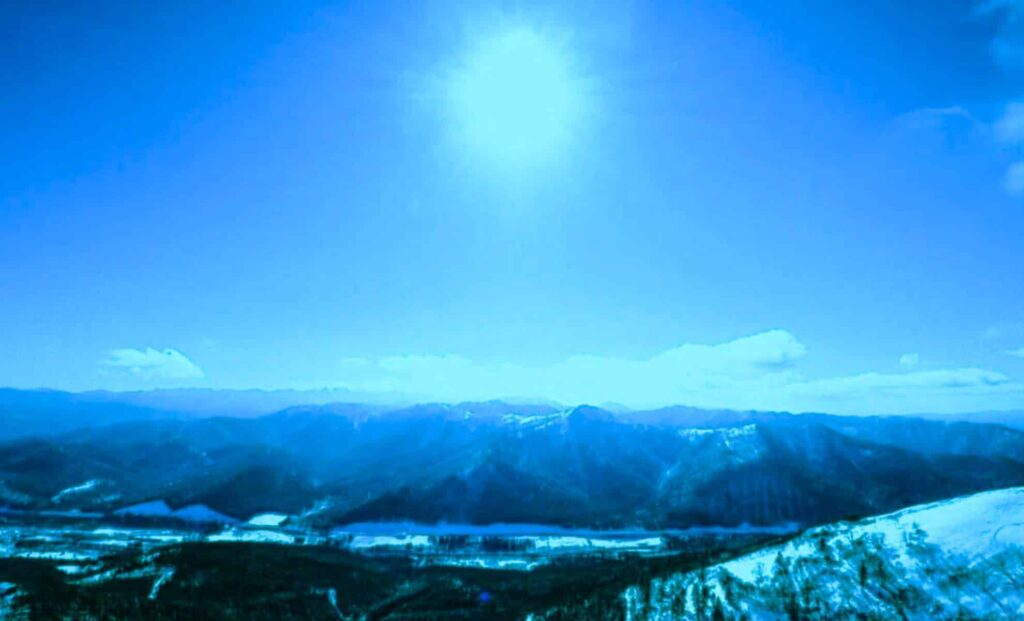In the summer of 1831, something strange happened to the skies over Europe and North America. As witnesses later described, the Sun turned an unsettling shade of blue, crops failed, and temperatures dropped when they should have been at their peak. The atmosphere took on a metallic hue. People were baffled, uneasy—and eventually, silent about it.
For generations, the cause of this bizarre episode remained unknown. No volcanic eruption on record at the time seemed large enough to have triggered such far-reaching atmospheric effects. Some experts speculated about Ferdinandea, a submarine volcano off the coast of Sicily that briefly breached the surface in July of that year. But its size and emissions were modest—too modest to explain the sudden climate downturn or the unusual optical phenomena observed across continents.
Nearly two centuries later, the mystery has cracked open. A study published in the Proceedings of the National Academy of Sciences (PNAS) has identified a powerful, previously undocumented volcanic eruption on Simushir Island, part of Russia’s Kuril Islands chain. The eruption, now named Zav-1, blasted vast amounts of sulfur into the atmosphere—enough to cool the Northern Hemisphere for years and transform the appearance of the Sun itself.

Unlike the well-documented eruptions of Tambora in 1815 or Krakatoa in 1883, Zav-1 left no written record. That’s because it took place in one of the most remote and sparsely populated corners of the 19th-century world. The eruption’s silence allowed it to vanish from history—until researchers found its fingerprint, hidden in Greenland’s glacial ice.
A Climate Anomaly Finally Explained
The scientific sleuthing began with polar ice core records, long known to preserve chemical traces of volcanic events. Inside cores extracted from Greenland and Antarctica, researchers discovered a sharp spike in sulfur isotopes, along with shards of volcanic glass known as cryptotephra—the microscopic ash left behind by distant eruptions.
What made this discovery significant was the chemical match between the ice-bound tephra and a thick pumice layer found on Simushir Island, near the Zavaritskii caldera. This ash deposit, known locally as Zav-1, had never been precisely dated—until now.


“It was a eureka moment,” said Dr. William Hutchison, a volcanologist at the University of St Andrews and lead author of the study. “We had all the pieces—the ash chemistry, the sulfur data, the historical records of atmospheric effects—but no one had put them together until now.”
According to atmospheric modeling using the EVA_H model, Zav-1 ejected approximately 12 ± 3.5 teragrams of sulfur into the stratosphere. That figure is comparable to the 1991 eruption of Mount Pinatubo, which caused a 0.5–0.6°C global temperature drop and disrupted global weather for several years, according to NASA’s Earth Observatory. Zav-1 likely had a similar cooling effect—particularly in the Northern Hemisphere, where the impact was most concentrated.
A Ghost Volcano With Global Impact
Unlike Ferdinandea, whose fiery outburst created a fleeting island visible from Sicily’s shores, Zav-1 occurred in near-total obscurity. In the 1830s, Simushir was home only to small groups of Ainu and scattered Russian colonial outposts. No journals, maps, or letters recorded the event. Yet the 10-centimeter-thick ash layer spread across the island tells the story of a Plinian eruption—a type of explosive event that ejects material over tens of kilometers and often forms large calderas.
Dating the eruption involved more than matching ice core and ash chemistry. Researchers also found archaeological artifacts—such as charcoal, rusted metal, and muscovite window glass—buried beneath the Zav-1 deposit, all pointing to a timeframe in the early 19th century. These were corroborated by tree-ring data and glaciochemical timelines, aligning precisely with the summer of 1831.
The study also explored the eruption’s radiative forcing, the change in Earth’s energy balance caused by the injected aerosols. According to modeling, Zav-1 caused a radiative forcing of −2 ± 1 W/m², a value that matches other climate-altering eruptions of the last 200 years, including Pinatubo and the 1835 Cosegüina eruption in Nicaragua.
When Skies Lie
What about the blue Sun? Curiously, while Zav-1 likely drove the long-term cooling and atmospheric veil, researchers believe the short-lived optical phenomena—Sun appearing green, violet, or deep blue—may still be attributed to Ferdinandea.
Though small in scale, Ferdinandea’s tropospheric plume could have produced the visible haze and color distortions reported across Europe and the eastern United States. These kinds of low-altitude ash clouds, while insufficient to alter climate, can dramatically change how sunlight scatters—explaining why people noticed colored suns and moons for just a few weeks in August 1831, a pattern consistent with observations following the 1883 Krakatoa eruption.
Historical precedents support this theory. In 44 BC, a minor eruption of Mount Etna caused strange skies across the Roman world, while a simultaneous large eruption in Alaska’s Okmok caldera (only recently identified) was responsible for a significant drop in temperatures and social unrest in the Mediterranean, as described in Nature Communications.

